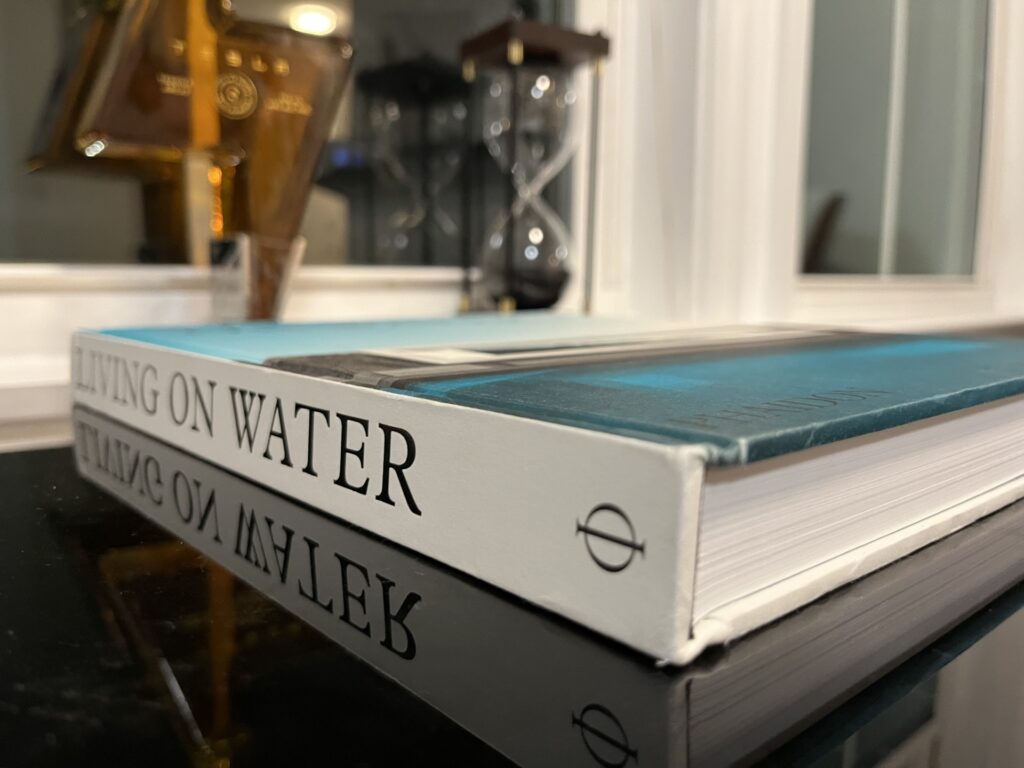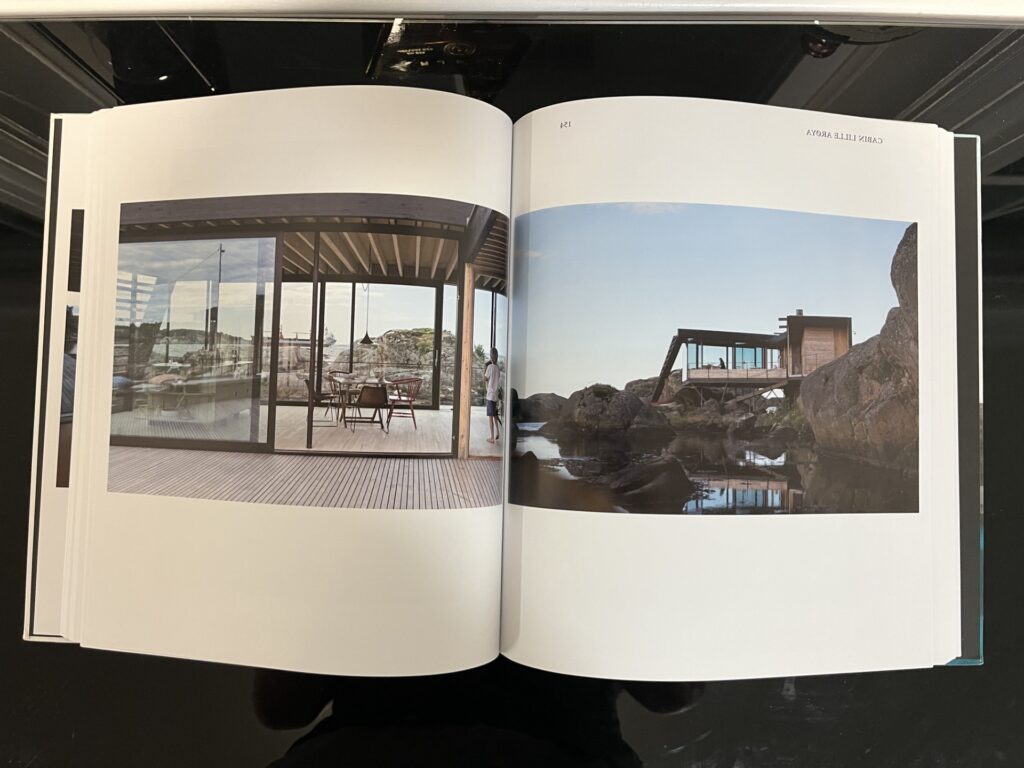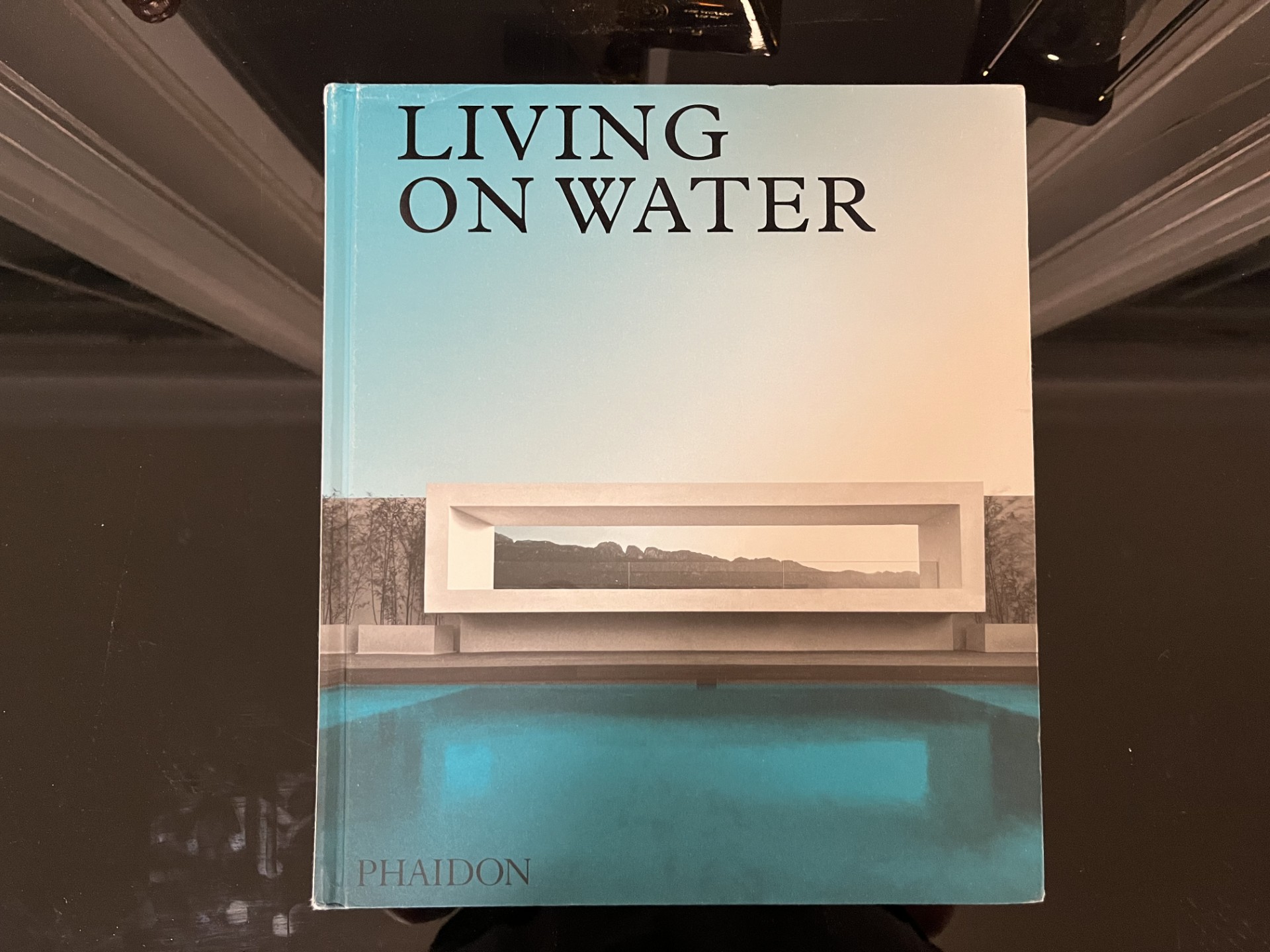“Living on Water: Contemporary Houses Framed By Water” is a stunning coffee table book that celebrates unique homes designed around water. This book showcases sixty remarkable architectural masterpieces that create a special harmony with their aquatic surroundings. Readers can expect to find breathtaking examples of contemporary design that not only emphasize aesthetics but also the importance of water in architecture.

Flipping through its pages, one can easily get lost in the beauty of these residences that range from lakeside cabins to oceanfront villas. This visual journey allows homeowners and architecture enthusiasts to dream and find inspiration in how water can shape living spaces. The book invites readers to appreciate the intricate connections between nature and human-made structures, making it a must-have for anyone passionate about innovative design.
The Concept of Aquatic Architecture
Aquatic architecture refers to the design of homes and buildings that have a close relationship with water. This includes styles that are influenced by natural bodies like lakes, rivers, and oceans. The following sections examine its history, benefits, and the challenges faced by such structures.
History and Evolution
Aquatic architecture has roots in ancient civilizations. Early cultures often built homes near water sources for practical reasons. These locations provided food, transportation, and a water supply.
As societies advanced, so did architectural styles. Over the years, designers began to create more complex structures. Floating homes, stilt houses, and properties built directly on water emerged as solutions to rising sea levels and limited land availability.
In the modern era, architects focus on creating sustainable designs. Innovations in materials and technology have led to impressive structures. These homes aim to blend seamlessly with their aquatic surroundings.
Benefits of Living on Water
Living on water offers unique advantages. One significant benefit is the breathtaking views. Homes with waterfront access provide relaxing sights of nature that can enhance well-being.
Another advantage is the tranquility that often accompanies such locations. The sound of water can create a calm atmosphere, ideal for meditation and relaxation.
Additionally, aquatic homes are often designed to utilize sustainable practices. They may incorporate renewable energy sources and smart water management systems. This design philosophy not only promotes eco-friendliness but also reduces living costs.
Challenges and Considerations
While the concept of aquatic architecture has many benefits, it also comes with challenges. Weather is a significant concern. Homes near water are often exposed to flooding and storm surges. Building materials need to be resilient against moisture and extreme conditions.
Regulations can also be challenging. Homeowners may face strict zoning laws regarding where they can build. Obtaining permits often requires complying with environmental guidelines.
Lastly, maintenance can be more demanding. Aquatic homes may need frequent inspections for wear caused by water exposure. Homeowners must budget for these upkeep costs to ensure their investment lasts.
Showcasing Contemporary Water Homes

Contemporary water homes highlight unique architectural designs while seamlessly blending with their natural surroundings. These homes not only embrace aesthetics but also focus on sustainability, making them truly innovative.
Architectural Design and Innovation
Contemporary water homes feature striking architectural styles that are both functional and beautiful. Many designs include large glass windows to maximize natural light and provide stunning views of the water.
These homes often utilize open floor plans that promote a connection between indoor and outdoor spaces. For instance, sliding glass doors may open directly onto a deck or patio, enhancing the living experience.
Innovative materials like steel and timber are frequently used to ensure durability and weather resistance. The emphasis on clean lines and minimalist design creates a sleek appearance that resonates with modern lifestyles.
Integration with the Environment
These homes are designed to harmonize with their natural surroundings. They often incorporate landscaping that complements the water features nearby, creating a seamless transition from the home to the environment.
Many designs include terraces and balconies that provide outdoor living spaces for relaxation and entertainment. This encourages owners to engage with nature while enjoying their home.
In addition, some contemporary water homes are elevated, allowing for better views and protection from flooding. This thoughtful approach reflects a commitment to preserving the environment while enjoying the beauty of waterfront living.
Sustainability and Eco-Friendliness
Sustainability is a key focus in the design of contemporary water homes. Many incorporate energy-efficient systems like solar panels and rainwater collection systems.
These homes often use sustainable materials that reduce their environmental footprint. For example, reclaimed wood and recycled metals are common choices that contribute to eco-friendliness.
Additionally, innovative insulation techniques improve energy efficiency, reducing heating and cooling costs. This makes the homes not just beautiful but also responsible choices for modern living.
Exploring Diverse Locations
The book “Living on Water: Contemporary Houses Framed By Water” showcases stunning homes designed around various bodies of water. These unique locations highlight the beauty of architecture in harmony with nature.
Water Houses Around the World
Homes by water can be found globally, each offering a unique perspective on living close to nature. In the Caribbean, colorful houses sit on stilts over turquoise waters, providing stunning views and refreshing breezes.
In Europe, lakeside homes often feature expansive glass walls, blending indoor and outdoor spaces seamlessly. The design in these homes focuses on maximizing light and views while maintaining comfort.
In Asia, traditional architecture reflects local culture. Homes floating on rivers withstand seasonal flooding, showcasing resilience and adaptability. Each region’s climate and environmental needs shape the design and style of these water houses.
Cultural and Regional Variations
Cultural influences significantly impact house designs by water. In Scandinavian countries, you’ll find minimalist designs that emphasize sustainability and natural materials. These homes integrate with their surroundings and prioritize eco-friendly practices.
In contrast, tropical regions often embrace vibrant colors and elaborate designs. Local traditions dictate the use of space, blending open-air living areas with closed interiors for comfort.
Additionally, coastal homes adopt styles that withstand salty air and strong winds. Materials used are often resistant to corrosion, ensuring longevity. These cultural and regional variations make each water-centered home a unique expression of its environment and heritage.
Inside the Homes
These homes reflect a seamless blend of style and innovation, showcasing unique interior designs and advanced technologies. Each space is crafted to enhance its connection with water, resulting in inviting and functional environments.
Interior Design and Decor
The interior design of these homes focuses on airy, open layouts that maximize light and views of the surrounding water. Designers often use light colors and natural materials to create a soothing atmosphere, reflecting the tranquility of aquatic life.
Large windows play a significant role, bringing the outside in. Many homes employ sliding glass doors that extend living spaces onto decks or patios, creating a fluid transition between indoors and outdoors.
Furniture choices are often minimalistic yet elegant. Designers select pieces that do not overpower the space, opting for furnishings that are both stylish and functional. Natural textures, like wood and stone, are common elements that anchor the design, promoting a calming environment.
Technological Innovations
Technological advancements are key in modern homes framed by water. Smart home systems control lighting, temperature, and security, enhancing comfort and safety.
Many homes utilize energy-efficient designs, such as solar panels and rainwater collection systems, aligning with eco-friendly trends. Heating and cooling systems are often smart-enabled to adjust based on weather, promoting energy savings.
Moreover, some residences feature automated window treatments to control sunlight, further enhancing energy efficiency. Water features, such as fountains or pools, can also integrate with smart technology for easy management.
Such innovations not only make living more convenient but also ensure these homes maintain a sustainable connection with their environment.
The Architects Behind the Scenes
This section explores the innovative minds and design philosophies of architects who shape homes close to water. Their unique styles and methods create breathtaking residential spaces that connect with their surroundings.
Notable Architects and Firms
Several renowned architects and firms are featured in “Living on Water.” They bring a variety of styles and techniques to waterfront designs.
For example, Kazuyo Sejima and Ryue Nishizawa, founders of SANAA, are known for their minimalist yet elegant structures. Their designs often merge seamlessly with water, enhancing the natural beauty.
Another highlight is Marcio Kogan, whose firm, Studio MK27, creates stunning homes that prioritize light and openness. Their use of local materials connects their projects with the landscape, making water a central theme.
Design Philosophy and Approach
The architects share a commitment to blending architecture with nature. Many focus on creating harmony between the building and its aquatic surroundings.
Sustainability is also a key principle. They emphasize eco-friendly materials and designs that minimize impact on the environment.
Water serves not just as a view but as an integral part of each home. Features like large windows, open spaces, and outdoor areas promote interaction with the water while maximizing light and air flow.
This thoughtful approach to design not only provides stunning visuals but also enhances the living experience.
Building Technologies and Materials
Innovative building technologies and carefully chosen materials play a crucial role in the homes featured in “Living on Water.” These elements not only enhance aesthetics but also ensure durability and sustainability.
Construction Techniques
The homes highlighted in the book utilize a variety of advanced construction techniques. Elevated structures are common, preventing flooding and allowing for stunning water views. Many builders incorporate modular construction, which speeds up the building process and reduces waste.
Sustainable practices are also key. For instance, some designs employ prefabricated elements, minimizing the on-site impact. Additionally, renewable energy systems, like solar panels, are often integrated, promoting energy independence.
This combination of techniques contributes to impressive structural integrity and environmental responsibility.
Material Selection and Usage
Material choice is essential in creating homes that beautifully connect with their watery surroundings. The book showcases the use of natural materials, such as wood and stone, which blend seamlessly with the landscape.
Glass is hugely popular, allowing natural light to flood interiors while offering panoramic views. This transparency is essential for enjoying the beauty of water, while also ensuring airflow.
Moreover, weather-resistant materials protect against harsh elements. For example, composite decking and treated wood help maintain the home’s appearance over time. This conscious selection ensures that each house remains vibrant and functional throughout its life.
Owners’ Perspectives
Living by water offers a unique lifestyle and brings specific responsibilities. Owners of homes featured in Living on Water express their deep connections to nature and the challenges that accompany this type of living. Here’s a closer look at their experiences.
Lifestyle and Daily Living
Owners describe their daily lives as deeply intertwined with the surrounding water. Mornings often start with beautiful sunrises reflecting on lakes or oceans. This connection to nature fosters a serene atmosphere. Many contemplate their homes as retreats, providing relaxation and peace.
Activities like swimming, kayaking, or fishing become part of their routines. These homes promote outdoor living, encouraging owners to spend more time outside. Families often bond over shared experiences, creating memories that last a lifetime.
The stunning views and natural sounds of water add value to everyday activities, making simple tasks, like enjoying a cup of coffee, feel special. With such an atmosphere, it’s no wonder owners cherish their unique lifestyles.
Maintenance and Upkeep
Living on water can require extra maintenance. Owners often note that exposure to moisture affects their homes more than traditional houses. Regular checking for leaks and rot is essential to prevent problems.
For many, landscaping is another important aspect. They choose plants that thrive near water while considering erosion and other weather impacts. Some owners include features like docks that need regular upkeep.
Cleaning is also a task that comes with the territory. Owners frequently clean their properties to keep them looking pristine, especially after storms. Even with these challenges, many owners feel the rewards of waterfront living outweigh the efforts needed for maintenance.
Photographic Journey Through Water Homes
The book Living on Water: Contemporary Houses Framed By Water offers a stunning visual experience. Each page showcases homes that beautifully blend architecture with their aquatic surroundings.
Readers can explore various styles from sleek modern designs to rustic retreats. These homes create strong connections to water, whether they are perched over lakes or nestled next to rivers.
The photography captures not just the structures, but the environments they inhabit. Clear blue waters and serene reflections enhance the appeal of each home.
A variety of features stands out in this collection:
- Panoramic views that invite nature inside.
- Innovative designs that harmonize with their settings.
- Unique materials that respond to their locations, like wood and glass, enhancing the tranquil feel.
Reflections on the Future of Waterfront Living
Waterfront living is evolving, shaped by changing climates and innovative designs. More people are drawn to homes near water for the beauty and tranquility these settings offer.
As urban areas grow, architects are designing sustainable waterfront homes. They focus on minimizing environmental impacts while maximizing the connection to nature. These designs often include:
- Flood-resistant features to protect against rising water levels
- Eco-friendly materials that reduce carbon footprints
- Innovative landscaping that enhances natural beauty and supports local ecosystems
Smart technology is also becoming part of waterfront homes. Homeowners can control lighting, heating, and security systems remotely. This convenience appeals to many looking for modern living solutions.
Future developments might even include floating homes. These residences can adapt to water level changes, providing an exciting alternative to traditional buildings. Floating communities could become more common in response to climate challenges.
The aesthetic appeal of water will remain a strong influence. People want homes that provide stunning views and a serene atmosphere. This desire will drive the creativity of architects and designers in the years to come.
Waterfront living is not just about homes; it’s also about lifestyle. Many seek a community that embraces outdoor activities like kayaking and fishing. Such lifestyles promote well-being and a deeper connection to the environment.
